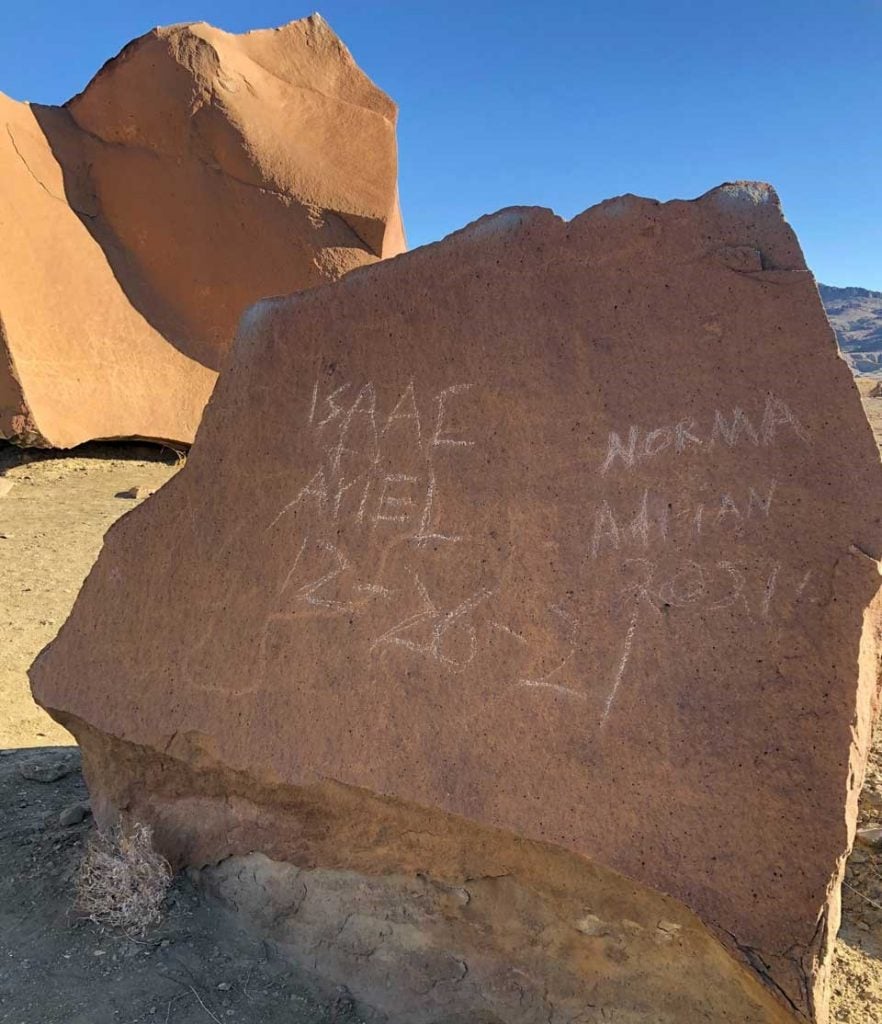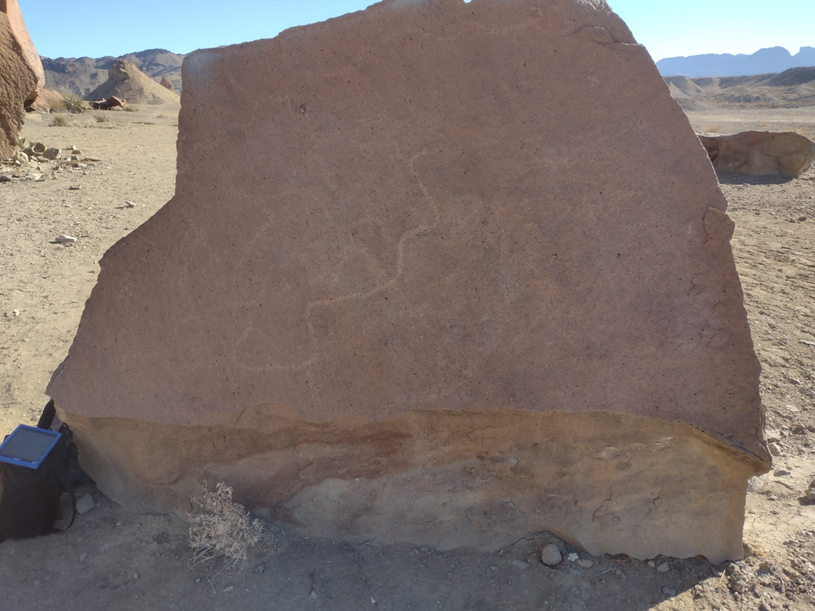Archaeology & History
Dimwitted Vandals ‘Irreparably Damaged’ 4,000-Year-Old Rock Art in Texas by Scrawling Their Own Names Into It
The names Adrian, Ariel, Isaac, and Norma were etched atop ancient abstract designs.

The names Adrian, Ariel, Isaac, and Norma were etched atop ancient abstract designs.

Taylor Dafoe

A panel of ancient petroglyphs at Big Bend National Park in Texas has been “irreparably damaged” by vandals who etched a series of names into the rock, the National Park Service has announced.
The additions crudely obscure a series of swirling, abstract designs believed to have been created by Native peoples between 4,000 and 8,500 years ago. The Park Service said in a news release that even though staff members have already treated the vandalized rock, “much of the damage is, unfortunately, permanent.”
Managers at the park, which spans more than 800,000 acres in southwest Texas, said the episode is the latest in a string of crimes that have occurred in the area recently. Big Bend archeologists have registered more than 50 instances of vandalism since 2015.
Damaging park resources is a federal crime, as is defacing ancient cultural sites, which are protected under the Archaeological Resources Protection Act of 1979.

The Big Bend panel following treatment by part experts. Courtesy of the National Park Service.
The identity of the vandals is not currently known, but they left plenty of information to help authorities track them down. “Adrian,” “Ariel,” “Isaac,” and “Norma” were the names scrawled onto the rock face, accompanied by a date, “12-26-21”—presumably the day of the incident.
“Damaging natural features and rock art destroys the very beauty and history that the American people want to protect in our parks,” Big Bend National Park superintendent Bob Krumenaker said in a statement. “With each instance of vandalism, part of our nation’s heritage is lost forever.”
Of the search for the graffitists, Tom VandenBerg, Big Bend’s chief of interpretation and visitor services, told Texas Monthly that his team has “pretty strong potential leads.” (VandenBerg declined to expand on this point when reached by Artnet News.)
Hoping to protect the now-defaced rock from any further interventions, the Park Service did not specify its location, noting only that it lived in Indian Head, a western section of Big Bend home to numerous petroglyphs, pictographs, and other ancient archeological treasures.
To add insult to injury, VandenBerg told Artnet News that a “well-intentioned person” already tried to clean the graffiti, but did so using tap water and thus “left extensive water staining and residue that discolored the boulder.”
Since then, experts have given the rock a proper cleaning. The effort, VandenBerg noted, “removed the majority of the staining and significantly reduced the visual impact” of the graffiti.